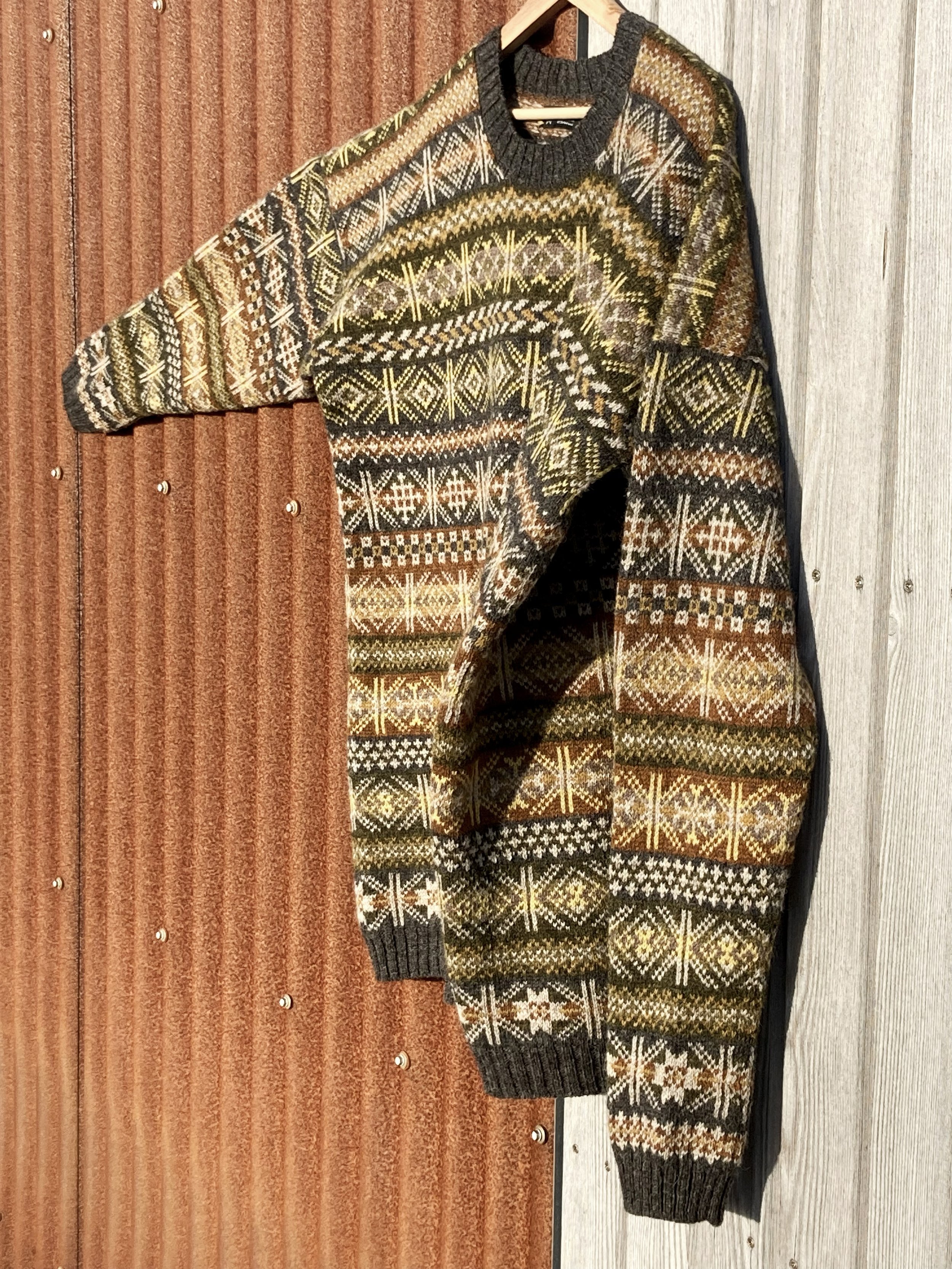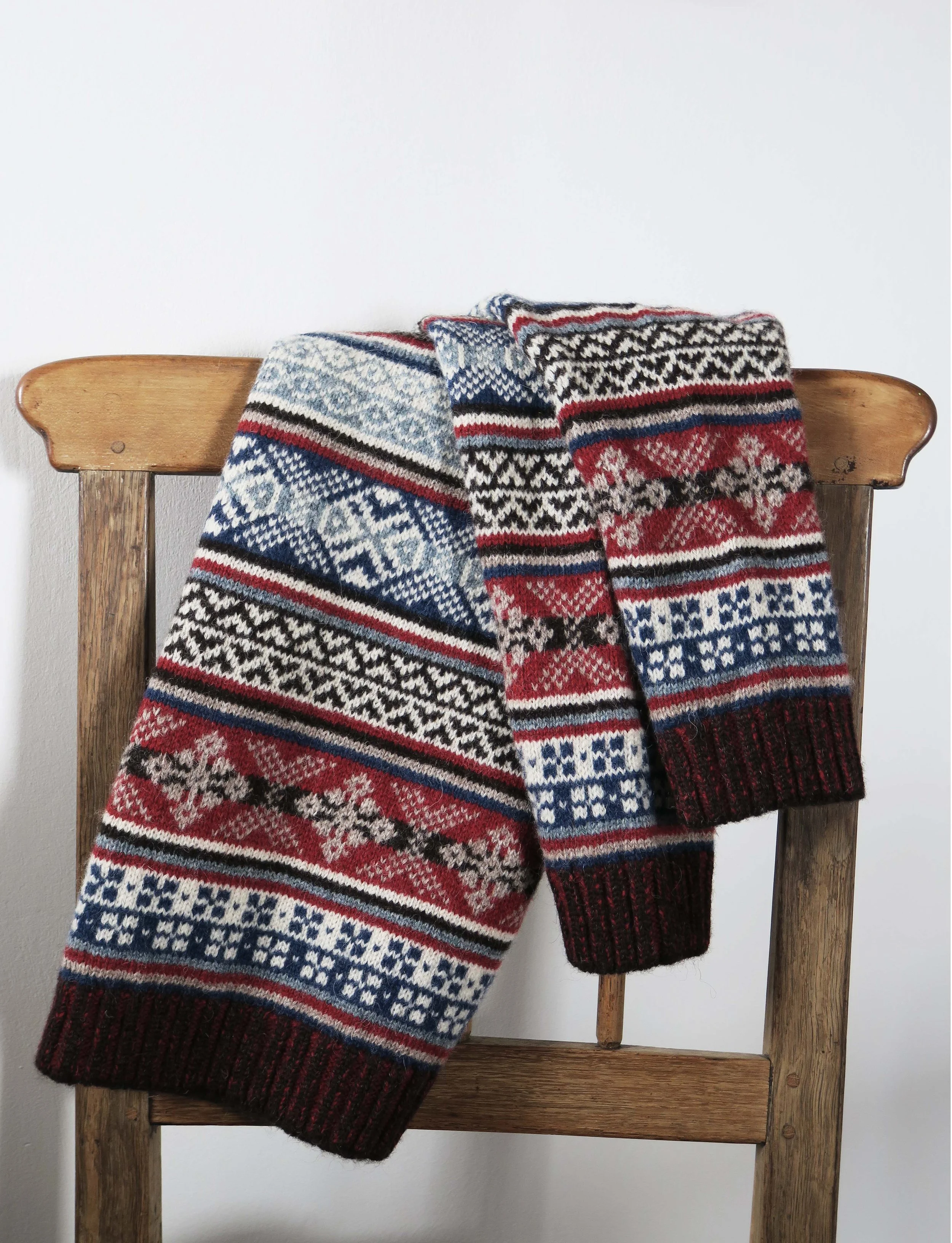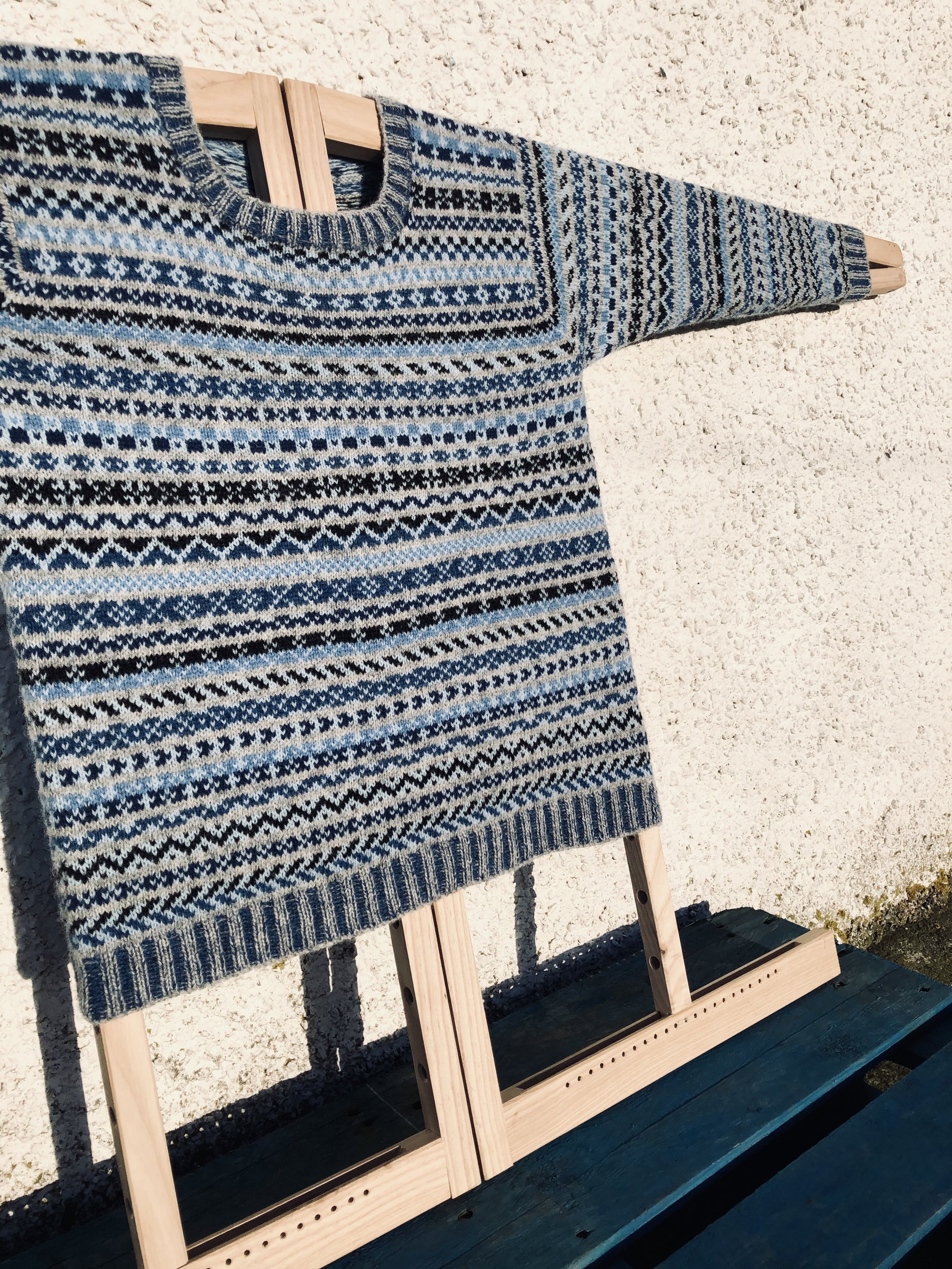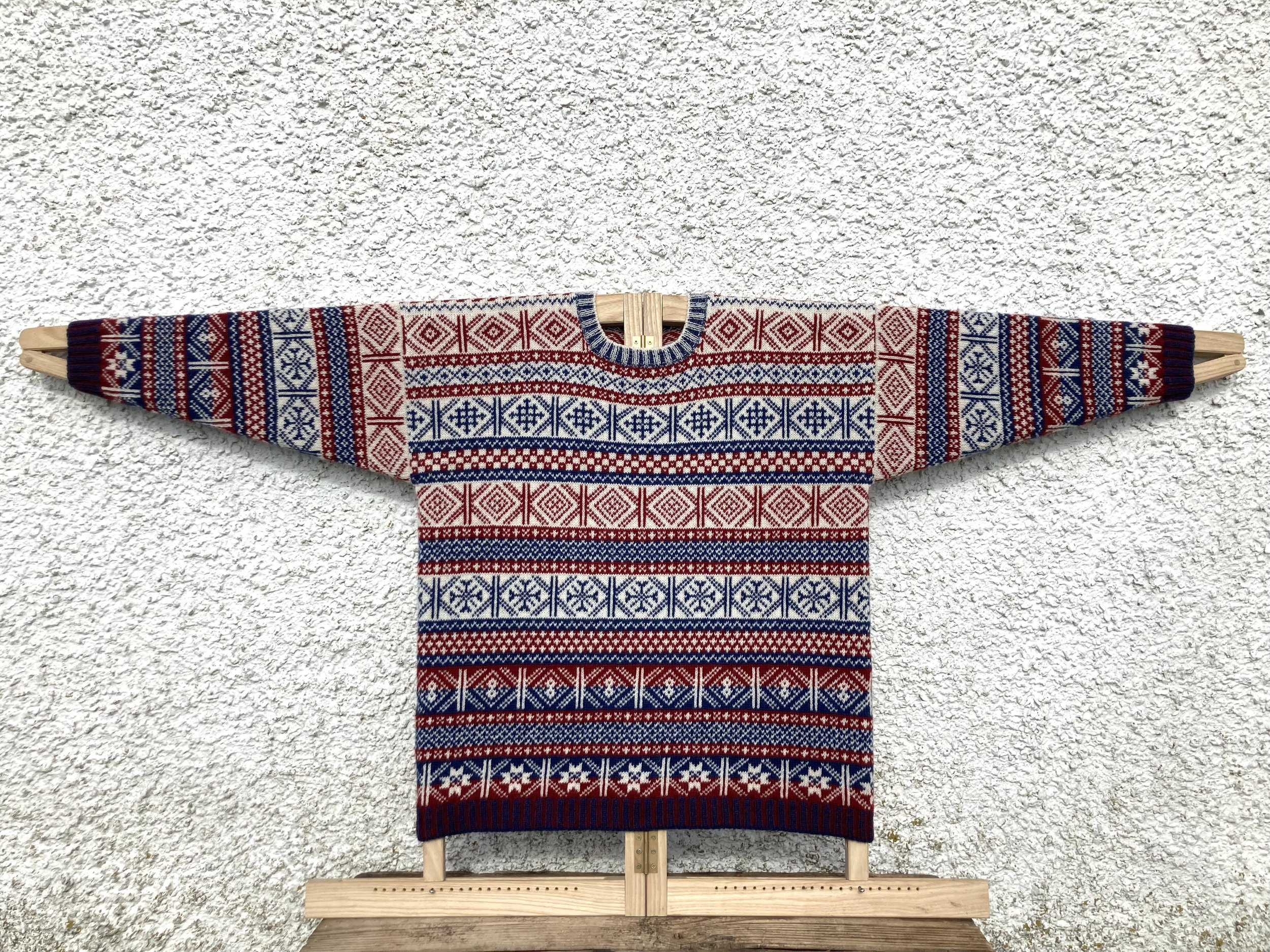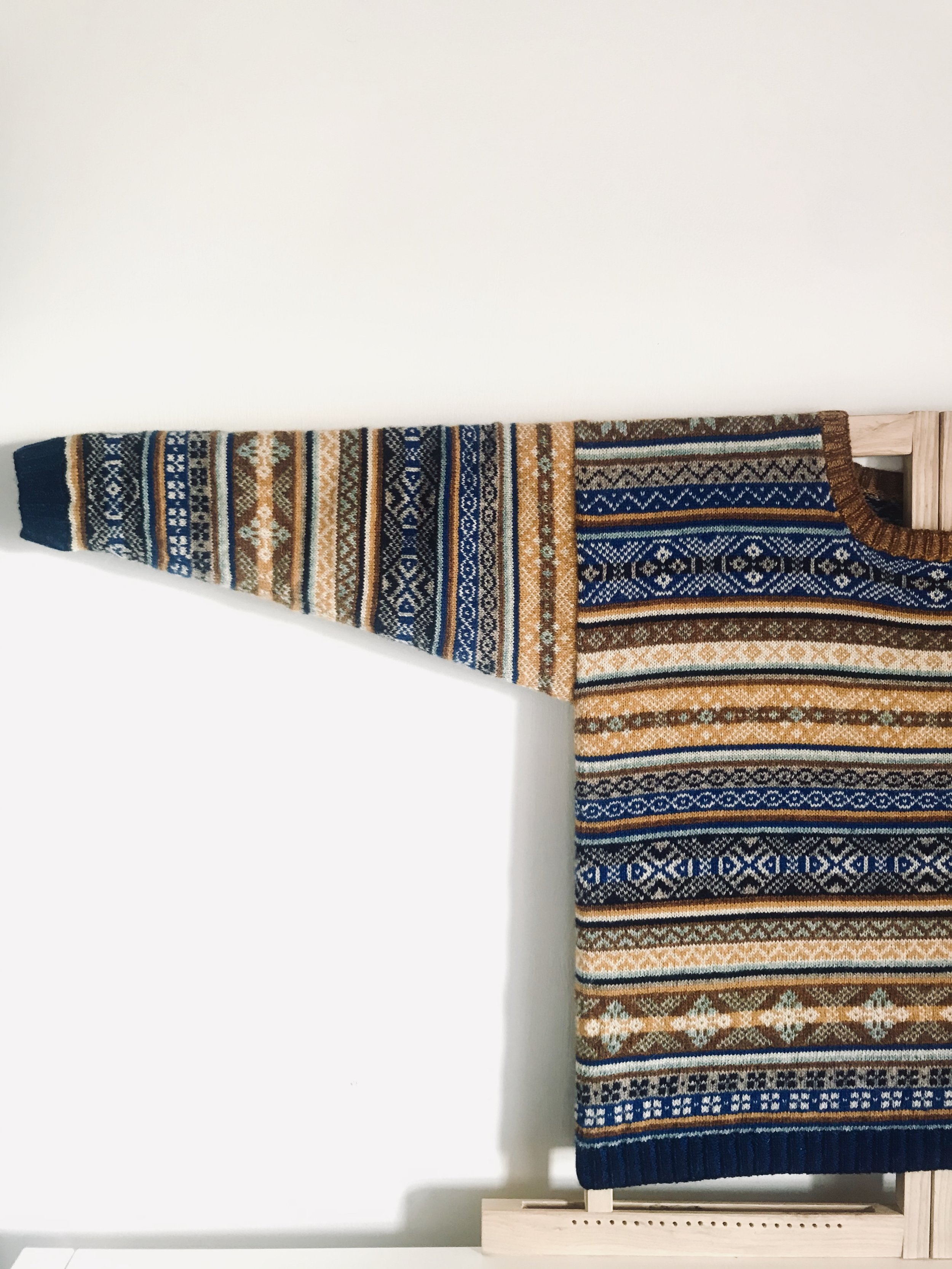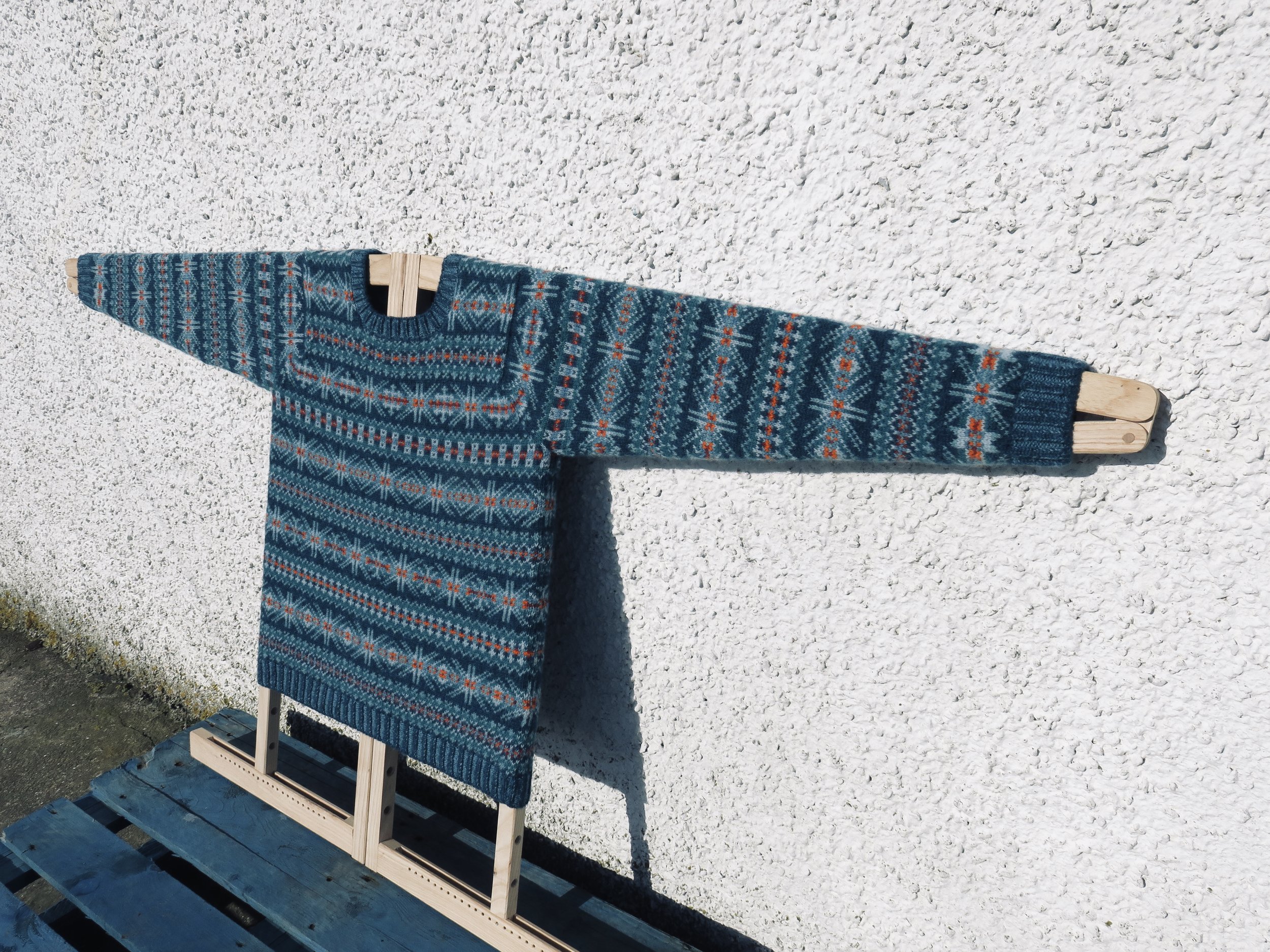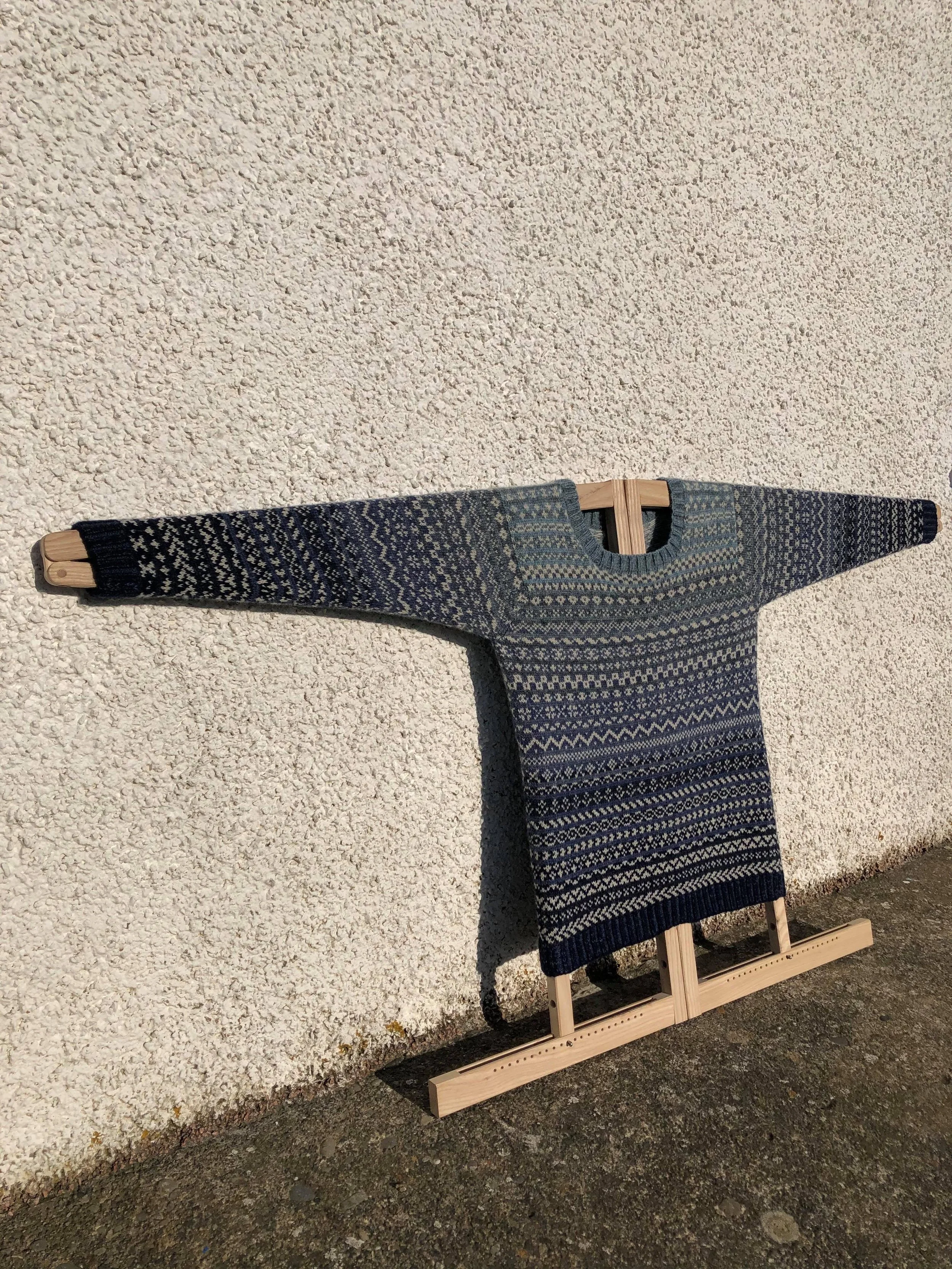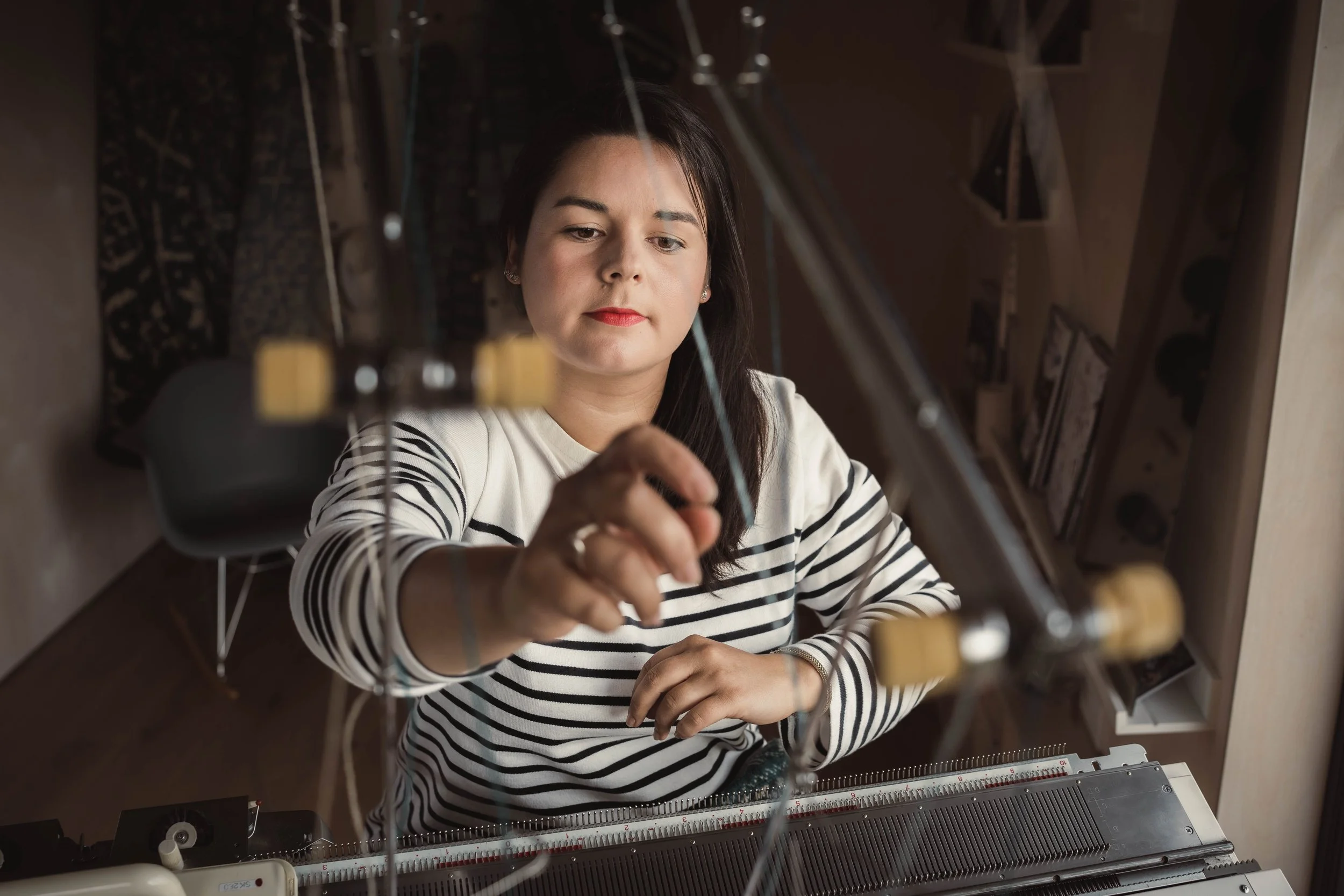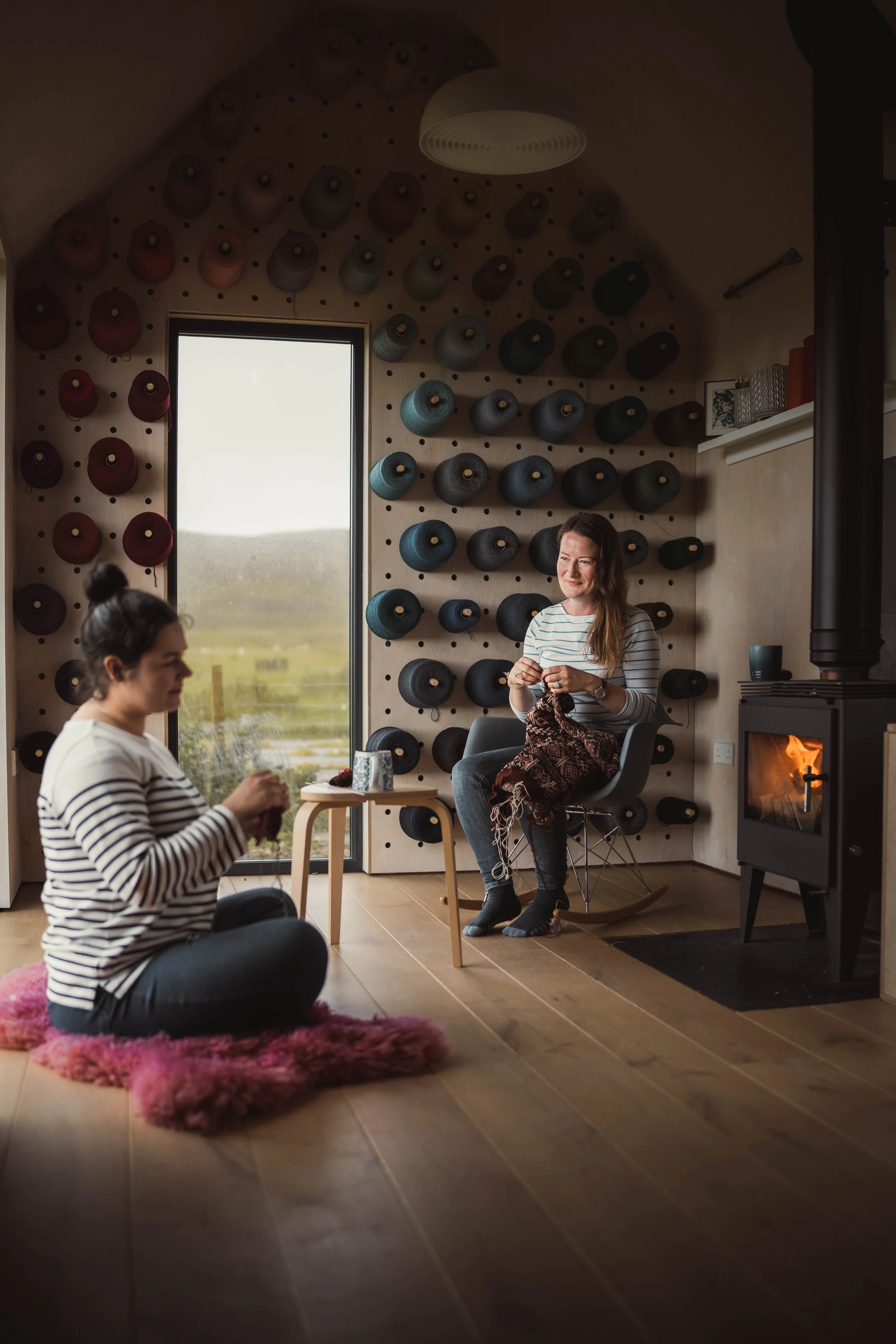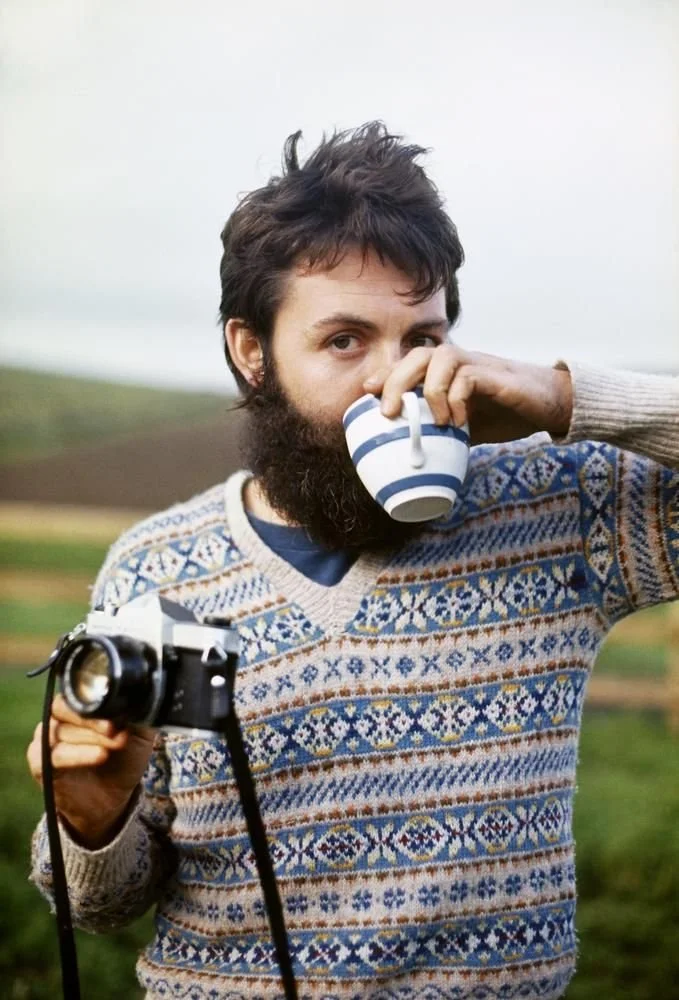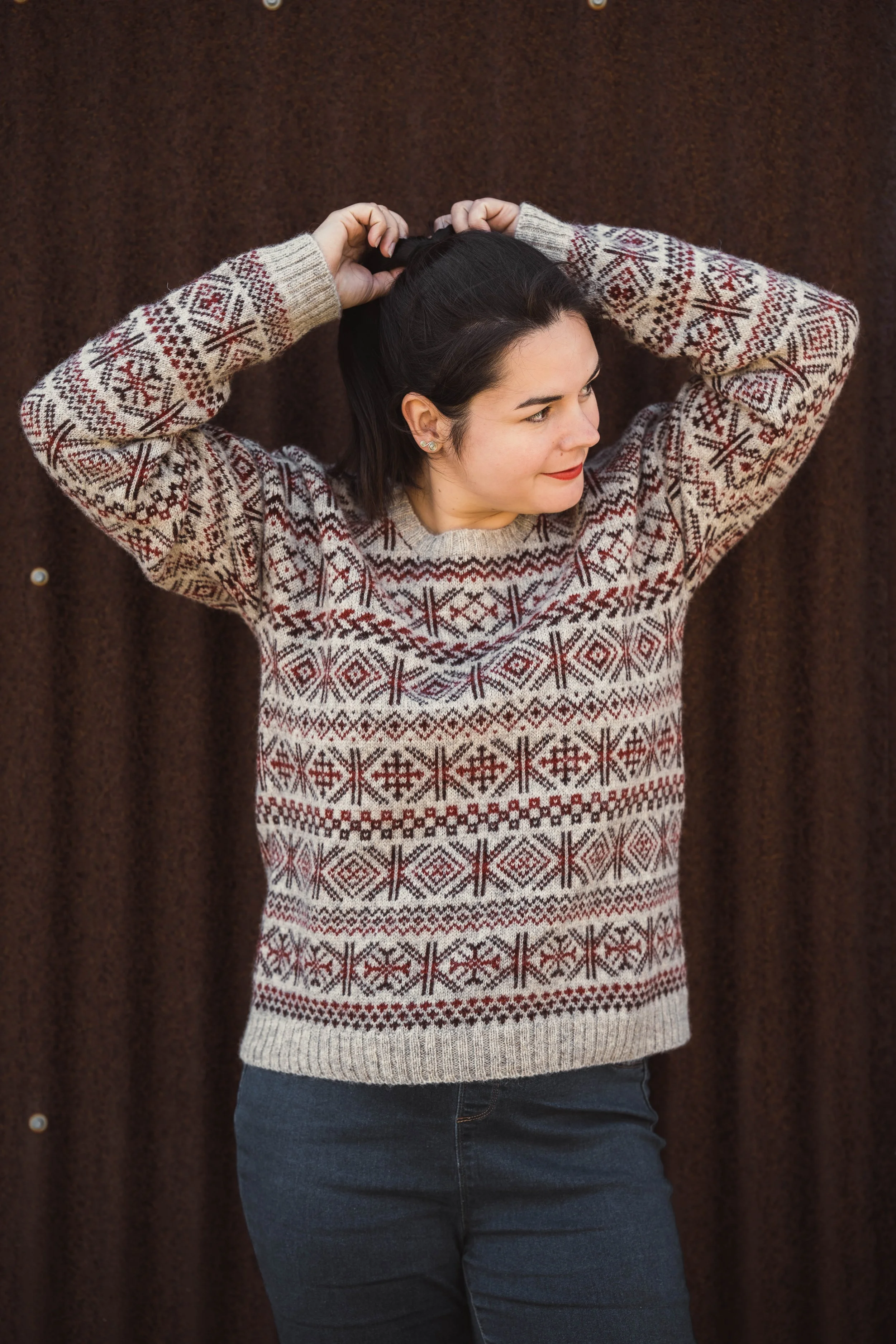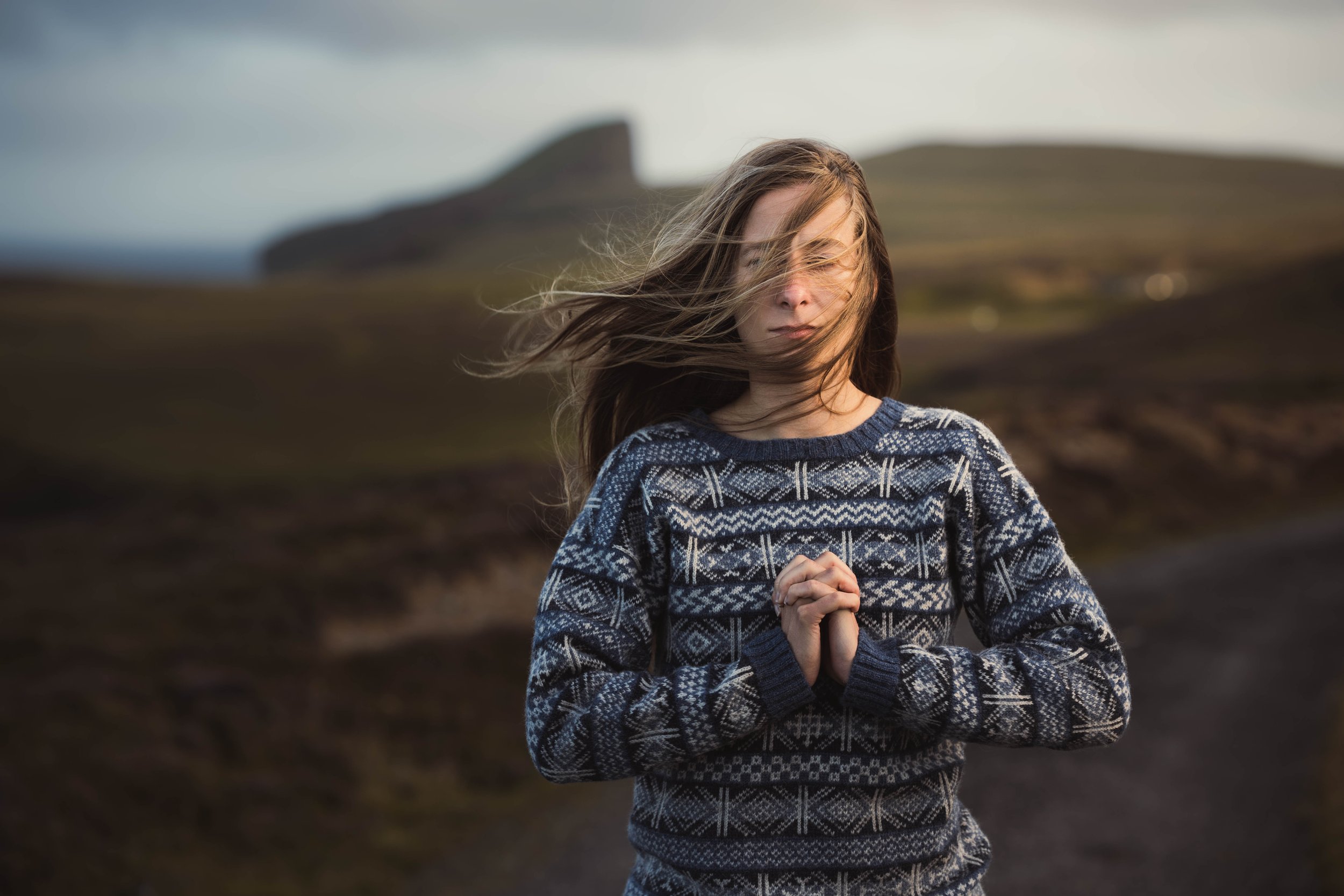
the knitting
At Fair Isle with Marie, knitting is done on mechanical flat-bed knitting machines, operated by hand and requiring no electricity. Explore the machine-knitting page to delve into this fascinating process.
Despite the assistance from the machines, knitting still demands a considerable amount of time due to extensive hand manipulation. Manual processes, such as changing colour, contribute to the overall crafting time. The duration of knitting varies based on the size and complexity of the project; typically it takes around ten hours to complete the four panels of a jumper.
Marie's designs not only showcase traditional patterns (motifs) from the island but also reflect her discerning colour choices and innovative design approach. Drawing inspiration from the captivating landscape and scenery of Fair Isle, each creation is a unique fusion of tradition and contemporary aesthetics. Scroll down to see examples of previous commissions and see inspirational colourways.
the finishing
The pride of Fair Isle knitters resides in the absolute perfection of the finishing of each product. Seams are meticulously crafted by hand, using the mattress stitch technique, resulting in a completely invisible join between two pieces. This method is employed for connecting the front and back of a garment, for example. Another technique, called grafting, is utilized to attach ribbed trim or sleeves on a jumper.
The finishing usually takes as long as the time spent knitting on the machine. Take a Fisherman’s Kep, for example; it takes around two hours to knit on the machine and then almost three hours to finish by hand! The crown is hand-knitted, the little rib is grafted on, then the whole length of the hat needs to be sewn.
This careful work can be done at home, requiring only minimal space, and set aside as needed to fit around the busy lives of islanders.
the wool
We are dedicated to utilizing only the finest locally-sourced wool for our creations; namely, Jamieson’s of Shetland ‘Spindrift’–this is a premium100% Shetland wool that is both spun and dyed on the Shetland mainland. This local sourcing not only aligns with our business ethos but also brings several benefits to our craft and your garments.
Shetland wool, renowned for its exceptional quality, offers unique advantages as a material for clothing. Its natural insulation properties provide unparalleled warmth, making it an ideal choice for cosy comfortable knitwear. The use of Jamieson’s ‘Spindrift’, with its extensive palette of over 200 shades, allows us to craft beautiful colourways, inspired by the captivating scenery of our island home.
Shetland wool is known for its durability and resilience, ensuring that each item we create is crafted to last. Furthermore, the use of local wool supports the sustainability of the community and promotes a circular economy.
To maintain the longevity of your handmade garments, we recommend infrequent washing. Airing woollen pieces outside is often sufficient to refresh them. When washing is necessary, use a gentle wool soap in cold water. All items should be set flat to dry, avoiding the use of a dryer.
the origins
The Fair-Isle Jumper by Stanley Cursiter, painted in 1923. © estate of Stanley Cursiter.
For hundreds of years, knitting has been an important part of the way of life for the islanders. The success of their distinctive approach with striking colour work and complex patterns was such that the island gave its name to a generic knitting technique that embraced much more than just the ‘traditional Fair Isle knitting’. The name is now used worldwide to describe stranded colour knitting.
However, authentic Fair Isle knitting follows three rules:
– It must be made of Shetland wool
– It only uses no more than 2 colours per row.
– It adheres to traditional Fair Isle patterns
Additionally, if it is made in Fair Isle, you are guaranteed the genuine article!
There are only a few people still knitting commercially on the island but it remains a big part of the Fair Isle economy. The craftsmanship is passed down between generations and generously gifted to any incomer showing interest.
Originally the knitters were knitting using “wires”—very fine double-pointed needles. The knitting was often done in the round, helped by a knitting belt (a specially designed leather padded belt used to hold a needle in place and so free one hand to allow the agile knitter to increase speed).
Edward, Prince of Wales, 1921, by Sir Henry Lander
Paul McCartney at his High Park farm in Scotland in 1970
This video is part of a Virtual Tour created by the Fair Isle Marine Research Organisation in partnership with the Fair Isle Demonstration and Research Marine Protected Area. Find more videos about Fair Isle on their youtube channel.
